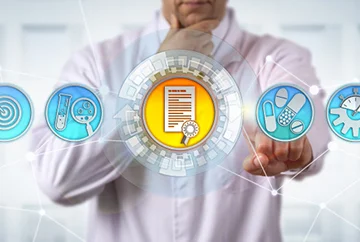For lack of a better-known alternative, over-the-counter antiviral drugs, like azithromycin, were being used to treat the symptoms of the coronavirus disease. The sales of the antibiotic medication shot through the roof. This chaos was concerning as the efficacy of the drug to treat COVID was far from known. It is then that a centralized, web-based, and automated portal of randomized evaluations enlightened the medical fraternity that the addition of azithromycin to the standard of care does not improve clinical outcomes of patients with severe COVID-19. This clinical trial in Brazil set a precedent for the COVID-19 standard of care globally.
What is AI & Automation in Pharmacovigilance
Automation in pharmacovigilance entails using cognitive technologies such as machine learning (ML) and advanced analytics to transform legacy data compilation processes and information gathering for regulatory approval. The use of new-age technology in PV is modeled around improving practices of a drug’s risk-benefit profile assessment, methods sought to select optimal treatments, and increase overall patient safety through product quality.
Benefits of Automation in Pharmacovigilance
Improved Employee Productivity
While the business case for automation in pharmacovigilance primarily centers around gaining process efficiency, a more significant benefit is the freeing of resources to allocate the same for performing value-added tasks. Monitoring and evaluating adverse drug reactions, real-world evidence analysis, and signal investigation forms the basis of functions executed by resources freed up due to automation in pharmacovigilance. An additional consequence of automating drug safety programs is improved quality assurance, accuracy and consistency in testing cycles, and reduced PV costs. A 2020 McKinsey study reports the potential of automating as much as 70% of PV-related tasks, the business value for which can be realized within three years of implementation.
By enabling robotic intelligence for case automation, one can speed up overall case processes and reduce the administrative burden on employees due to repetitive activities like duplicate searches of cases and reporting. In addition, the Robotic Process Automation technology offers numerous privacy and security benefits by eliminating the chance of human error or misuse. For example, RPA can be deployed to archive sensitive clinical cases of ICSR detection without ever necessitating human involvement.





